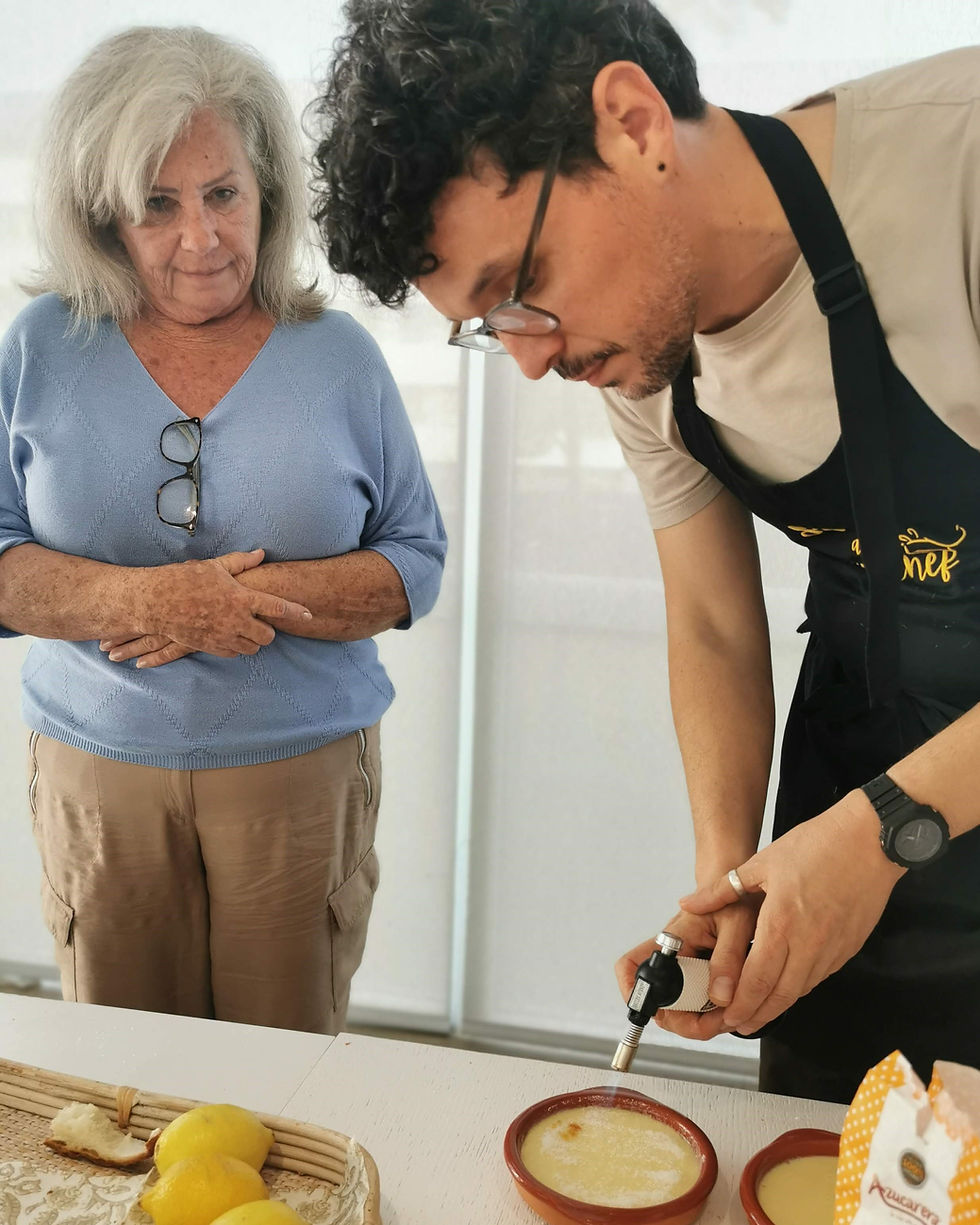4 Popular Semana Santa Desserts you should not miss
- spainandthechef
- Mar 15, 2024
- 4 min read
March is on and on our private food tours through Seville's streets, we can already smell the scent of incense. The city is preparing for Spain´s biggest cultural event of the year: Holy Week. Those fortunate enough to be on holiday in Seville during the Semana Santa will not only experience religious and cultural festivities but also enjoy some seasonal Spanish delicacies, which we will talk about today.

WHEN TRAVELING TO SEVILLE DURING HOLY WEEK…
Be prepared to add some calories to your travel souvenirs, because Semana Santa sweet desserts are not only delicious treats but also carry cultural significance in Spanish cuisine, and should not be missed.
As a Spanish Chef, I have prepared many traditional sweets myself and tried even more, trust me. In my opinion, every dish is perfect in its own composition and has its own unique taste, which makes it very hard to choose the "best". But still I have a few favorites I would like to share with you and, if you are up for it, prepare together in an immersive cooking class.

A SPANISH CHEF´S FAVORITE HOLY WEEK DESSERTS
Semana Santa is also family time and when I arrive at my home town during or before Semana Santa, my Mom always awaits me with homemade "flores".
1. FLORES
Flores are a type of pastry that is popular in Andalusia, especially during Semana Santa. These delicate pastries are named after their intricate and decorative shapes, resembling flowers, hence the name "flores," which means flowers in Spanish.
The preparation of flores typically involves a simple dough made from flour, eggs, milk and sugar, to which my Mom adds a splash of orange blossom water for added flavor. She owns a special mold, which you hold into the liquid dough and then place it into hot oil and thus deep-fry it until they become crispy and golden brown.
Once fried, the flores are often dusted with powdered sugar for an additional touch of sweetness. You can see, it is not a very light food, but as they are so thin, we believe that they can't be that high in calories, right?

When I visit my family during the holidays, a visit to my auntie´s house cannot be missed. Last time, she had a huge plate of rosquillas prepared, another very tasty dessert.
2. ROSQUILLAS
Rosquillas are essentially small doughnut-like pastries that come in various shapes and flavors. There are two main types of rosquillas: Rosquillas tontas (stupid rosquillas) and rosquillas listas (smart rosquillas). Why stupid and smart?
Rosquillas tontas are plain rosquillas, typically ring-shaped, that are made with a simple dough of flour, eggs, sugar, and, at my house, a hint of anise. They are often coated in sugar after frying, giving them a sweet and slightly crunchy exterior.
Rosquillas listas are similar to rosquillas tontas but are flavored with additional ingredients such as lemon zest, orange zest, or aniseed. The added flavorings give rosquillas listas a more aromatic and distinctive taste compared to the plain rosquillas.
Rosquillas are usually fried until golden brown and crispy on the outside while remaining soft and fluffy on the inside. During Semana Santa rosquillas are particularly popular and can be found in bakeries and households across Spain.

Another very typical Spanish Easter dessert is Torrijas. I personally love them very much, and I like to prepare them as a seasonal dessert in my cooking classes. But, when I am on a food tour with my guests, we enjoy them as a dessert in a restaurant or with a cup of coffee at a pastry shop.
3. TORRIJAS
Traditionally associated with Semana Santa, torrijas are made by soaking slices of bread in sweetened milk infused with spices like cinnamon and cloves, then dipped in beaten egg and fried until golden and crispy. Once fried, the torrijas are typically sprinkled with sugar and cinnamon. The result is a deliciously moist and flavorful dessert.

And last but not least, the pestiños. These delectable treats, also prepared for Christmas, are the most complex preparation. And if you are one of those who love honey, you should definitely not miss them!
4. PESTIÑOS
They are made by combining flour, olive oil, anisseed, and other ingredients to form a smooth dough. The dough is then shaped into squares or rhombus and deep-fried until golden brown. After frying, the pieces are either dipped in warm honey or sprinkled with sugar, giving them a delightful sweet and sticky coating. Pestiños boast a unique texture—crispy on the outside and tender on the inside. They are a cherished part of Spanish culinary heritage, originating from the Andalusian region but embraced throughout the country.

Now you know my favorite Semana Santa sweets. But there are many more culinary discoveries to be made during this special season of the year. In Seville, most restaurants prepare special menus during Holy Week and pastry shops and bakeries await with delicious and sometimes very innovative creations. If you want to see more of our culinary adventures, visit us on instagram or facebook. And to make your own list of favorites, there is, of course, no better way than to try them all. In the meantime, enjoy the flavors of every moment.
Óscar González Moreno
_edited.png)



Comments